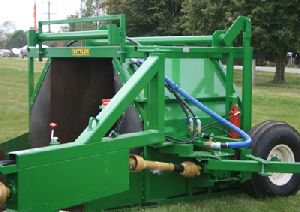
Windrow Turning Equipment
IN TODAY'S modern composting world, there is "windrow composting," a composting methodology, and then there is "composting in windrows," typically as the second phase of a different composting methodology, such as in-vessel, or enclosed aerated static piles. In the former, all composting from start to finish is done in windrows, and is typically conducted outdoors. In the latter, windrow composting may also include forced aeration, and is frequently conducted indoors (in an aeration building). In either case, windrow turning equipment is typically employed to optimize the composting process. In a windrow, temperature control and oxygen levels are managed via mechanical agitation. Pile temperature and oxygen level need to be taken by a site operator with hand-held monitoring tools. Pile turning introduces oxygen, accelerates physical degradation of feedstocks and provides an opportunity to adjust the moisture content to the optimum level. Many windrow turners have a watering attachment, which enables moisture to be added to the pile while turning. Generally speaking, the total composting time can be managed by the aggressiveness of the turning regime. More frequent turning breaks particles down more quickly, and provides an opportunity to optimize composting conditions, thus accelerating the process. This enables a windrow composting facility to increase its annual throughput capacity. In an effort to increase efficiency, many facility operators continually are trying to process more compost on a site of a given size. Turner manufacturers have moved in the same direction, developing equipment for larger windrows and also equipment that reduces aisle space. To manage on difficult sites, more manufacturers offer four-wheel drive and the option of wheels or crawler tracks (or a combination). In keeping with the trend towards space (and labor) efficiency, self-driven turners have been designed to have a short turning radius. Some models essentially pivot rather than turn.
...more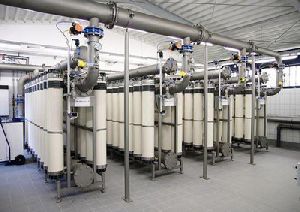
Water UF and RO Units
Ultrafiltration (UF) is a type of membrane filtration during which hydrostatic strain forces a liquid from a semipermeable membrane. Suspended solids and solutes of higher molecular weight are retained, although drinking water and minimal molecular excess weight solutes move via the membrane. This separation process is used in industry and study for purifying and concentrating macromolecular (103 – 106 Da) solutions. Ultrafiltration is not fundamentally diverse from microfiltration, nanofiltration or fuel separation, except in terms of the dimension of the molecules it retains. Ultrafiltration is applied in either cross-flow or dead-end modes and separation in ultrafiltration undergoes concentration polarization. Ultrafiltration methods eradicate the need for clarifiers and multimedia filters for waste streams to meet vital discharge requirements or to become additionally processed by wastewater recovery systems for H2O recovery. Effective ultrafiltration systems use membranes which might be submerged, back-flushable, air scoured, spiral wound UF/MF membrane that gives exceptional performance for the clarification of wastewater and process H2O. Reverse Osmosis (RO) goes beyond the abilities of typical water filtration by using a semipermeable membrane to remove impurities from water. Reverse Osmosis water filtration provides a low-maintenance, chemical-free option to help achieve clean, great-tasting water each and every day. Our large selection of reverse osmosis systems will ensure the right RO system for your home or business. Reverse Osmosis (RO) technology goes beyond the abilities of typical water filtration by using a semipermeable membrane to remove impurities from water. Reverse Osmosis water filtration provides a low-maintenance, chemical-free option to help achieve clean, great-tasting water each and every day. Our large selection of reverse osmosis systems will ensure the right RO system for your home or business.
...more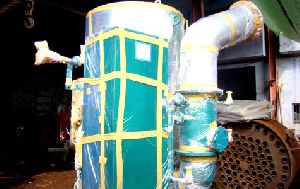
Water Softening Units
Water Softeners are recognized in different industry sectors for delivering optimum functional support in different industry sectors. Matching up with the demands of providing excellent water purification, these water softening units find usage in ensuring complete removal of calcium ions and magnesium from water that in turn results in removal of water hardness as well as in other water filtration applications in different industry sectors. Here, our expertise also lies in making these available in customized operational specifications as per client's provided treatment. Our designed Water Softening Plant are works on basic principle of reducing the excessive levels of calcium and magnesium ions in water. They are capable to remove total hardness dissolved in Water. Our water softners are well known for various features like low cost, reliable and highly efficient to soften your water. Once water hardness is known, you have two options. You can live with the hardness level, recognizing that levels below 7.0 gpg will probably not cause major scaling and soap film, or treat the water to reduce the calcium and magnesium present. A water softener, also called an ion exchange unit, will effectively accomplish the latter option. Ion Exchange Because water softening devices have long been available in the water treatment industry, the technology is highly developed and in most cases works well to reduce the hardness level. How does ion exchange work? A physical and chemical process filters the water through an exchange media known as resin or zeolite. Typically, the resin is a synthetic or natural, sand-like material coated with positively charged sodium ions. As the calcium and magnesium dissolves into positively charged ions, an ion exchange environment is created. The water flows through the unit while the resin releases its sodium ions and readily trades them for the calcium and magnesium ions. The water flowing out of the device is now considered soft. Regeneration Clearly the resin is not an inexhaustible exchange site. When all the sodium exchange sites are replaced with hardness minerals, the resin is spent and will no longer soften water. At this point, the water softener will need to be run on an alternate cycle called regeneration. During this cycle, resin is backwashed with a salt solution. The brine is reverse flushed through the system taking with it the calcium and magnesium ions that had been adsorbed on the resin. Once backwashing is complete, the softener can be returned to use. Some water softeners will automatically switch to the operation cycle. Others have a manual switch. Figure 1 illustrates both cycles of the water softening process—ion exchange and regeneration.
...more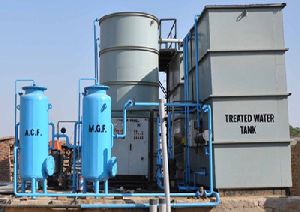
Water Filtration Units
Water Treatment Processes Clean, safe water is vital for every day life. Water is essential for health, hygiene and the productivity of our community. The water treatment process may vary slightly at different locations, depending on the technology of the plant and the water it needs to process, but the basic principles are largely the same. This section describes standard water treatment processes. Coagulation / Flocculation During coagulation, liquid aluminium sulfate (alum) and/or polymer is added to untreated (raw) water. When mixed with the water, this causes the tiny particles of dirt in the water to stick together or coagulate. Next, groups of dirt particles stick together to form larger, heavier particles called flocs which are easier to remove by settling or filtration. Sedimentation As the water and the floc particles progress through the treatment process, they move into sedimentation basins where the water moves slowly, causing the heavy floc particles to settle to the bottom. Floc which collects on the bottom of the basin is called sludge, and is piped to drying lagoons. In Direct Filtration, the sedimentation step is not included, and the floc is removed by filtration only. Filtration Water flows through a filter designed to remove particles in the water. The filters are made of layers of sand and gravel, and in some cases, crushed anthracite. Filtration collects the suspended impurities in water and enhances the effectiveness of disinfection. The filters are routinely cleaned by backwashing. Disinfection Water is disinfected before it enters the distribution system to ensure that any disease-causing bacteria, viruses, and parasites are destroyed. Chlorine is used because it is a very effective disinfectant, and residual concentrations can be maintained to guard against possible biological contamination in the water distribution system. Sludge Drying Solids that are collected and settled out of the water by sedimentation and filtration are removed to drying lagoons. Fluoridation Water fluoridation is the treatment of community water supplies for the purpose of adjusting the concentration of the free fluoride ion to the optimum level sufficient to reduce dental caries. Hunter Water is required to fluoridate water in accordance with the NSW Fluoridation of Public Water Supplies Act 1957. pH Correction Lime is added to the filtered water to adjust the pH and stabilise the naturally soft water in order to minimise corrosion in the distribution system, and within customers’ plumbing.
...more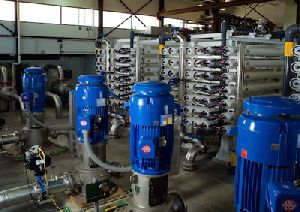
Wastewater Treatment System
in our Company increasing the throughput of an existing distillation process is an important objective of retrofit design of distillation processes. When the throughput is increased, entrainment flooding may create a bottleneck in the column. Important goals of retrofit design are to identify and remove such a bottleneck. This work develops an analysis tool for retrofit design of distillation columns. A new measure, fractional utilization of area (FUA), is proposed to identify the extent to which the area available for vapour flow on an existing stage of the column is utilized. The area utilization is assessed relative to an acceptable approach to flooding conditions in the column section. FUA is defined as the ratio of the area required for vapour flow on a stage to the maximum area available for vapour flow in the column section. An FUA curve, indicating area utilization on every stage in the column, can be generated from converged simulation results and existing sizing correlations. The FUA curve is a useful analysis tool, as it allows the bottleneck in the column to be identified and allows the effectiveness of proposed modifications to be evaluated. major Scope : Turbine train retrofit comprising of new HP/IP/LP Rotors. Redesigning of Reheater to match Retrofitted Turbine. Installation of state of art DCS"ALSPA P-320" and field Instruments. Burner management System. Associated Civil works in UCB and boiler. Operational Performance : Machine successfully tested for 120 MW and performed better than gauranteed parameters of Heat Rate and MW output. Retrofitted machine has been operating since lat five years at rated capacity. Unit has recorded continuous operation of 185 days. Achieved average PLF of appox. 95% after retrofit.
...more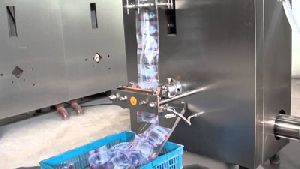
Pouch Packing Units
We are provide Water Pouch in various shapes and sizes. Playing an active role in packaging of various liquid and paste items, these machines are appreciated for their excellent compact design and reliable operation. Thee machines are known for their convenient and quick parameter settings. Our range of Chute Type Pouch Packing Machines is manufactured in line with in international quality standards. We are engaged in manufacturing wide range of Packaging Machine that is made from ultimate quality raw material. With high performance and low maintenance, these Packaging Machine are in high demand among our clients. Our pouche have minarals that are testing with different test. these tests are done with the presents of experts.
...more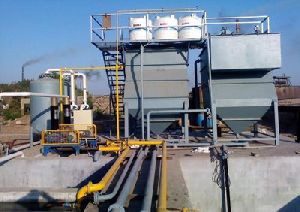
Effluent Treatment Plants
Micro Water solution is a leading manufacturer and supplier of IndustrialEffluent treatment plants for.These effluent treatment plants are used by different industries to reduce the potential for pollution and to comply with discharge consent conditions. Effluent treatment plant utilizes different technologies and processes for treatment of the waste. They can be streamlined for physiochemical treatment and biological treatment followed by tertiary treatment. Integrated functions with user friendly control makes the operation much easier. Our experts can also custom design effluent treatment plants based on the specific requirements of the clients. Industrial wastewaters from certain industries don't meet the standards) for discharge, and certainly not for reuse as process water. First of all, the toxic components have to be removed from the wastewater flow. Physicochemical wastewater treatment is a frequently used technique in the area of wastewater treatment. Physicochemical wastewater treatment techniques are applied for the removal of heavy metals, oils and greases, suspended matter and emulating organic substances, organic and inorganic components, difficult to decompose, non polar organic substances, toxic pollutants or high salt concentrations, phosphorus. These effluent treatment plants are used for purifying waste material that is an industrial waste These treatment plants help in solving environmental pollution issues without exposing same to open environment These effluent treatment plants are known for saving energy and removing pollution effluent with economical operations and also meet stringent pollution control norms These effluent treatment plants can treat effluent coming from different areas of plant
...more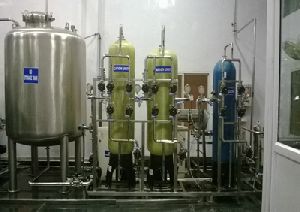
De-Mineralization Units
D-Minaralization is based on latest cost effective ion exchange technique of counter current regeneration. The units consist of two corrosion free pressure vessels internally connected in series. The first column containing Cation absorbing exchanger and second column charged with an anion absorbing exchanger. The water flow Pass through the bed of a Cation exchanger then the bed of an anion exchanger and the systems remove dissolved salts from water to a specified degree. Regeneration require after using total exchange capacity. The Cation Resin is regenerated with an acid and anion resin is regenerated with alkali solution. RWT consists of acid/alkali proof pressure vessel with internal fittings and initial charge of Cation and Anion exchanger, set of regeneration equipment, hydraulic ejectors, acid and alkali tanks and conductivity meter to monitor treated water quality. These DM Plants offer a practical range of capacities and flow rates necessary to serve wide variety of applications. Standard Portable Deionisers Standard portable deionisers are Upflow two-bed type compact and simple to operate with conductivity meter to monitor quality of treated water continuously when in operation. Demineralisers Demineralisers can be connected directly to the Raw water and can used for continuous supply or instant requirement of demineralised water. By this process the, It can be passible remove of hardness as well as remove of all dissolve salts i.e;. FeCO3, CaCl2 . We can also say that demineralization or deionization is the process of removing the dissolved ionized solids from water by ion exchange. The major portions of total dissolved solids (TDS) are mineral salts, such as calcium bicarbonate, magnesium sulfate, and sodium chloride. Mineral salts are composed of cations and anions. Since deionization requires the removal of all ions, both the negatively charged anions and the positively charged cations, then materials capable of attracting both are required. These materials are known as cation and anion exchange resins.
...more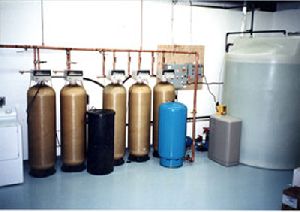
Chlorination Systems
We are pleased in introducing us as one of the leading Water Solution Firm, specializing in Chlorination Systems and Accessories used in Drinking Water, Cooling Water, Waste Water Treatment and other specialized applications. Backed by the state-of-art knowledge and richly experienced professional team in the field, We Design, Manufacture, Install & commission Chlorination Units & Accessories on a Turn -key Basis. Chlorination is the most widely used method of disinfection. Besides disinfection, chlorine also oxidizes iron, manganese, hydrogen sulphide in the water giving a highly cost-effective and efficient water treatment solution. Rainfresh chlorination systems incorporate high quality peristaltic metering pumps to provide accurate and consistent metering. Chlorination Units are ideal for use as primary or residual disinfection system for campgrounds & resorts, motels, etc. Water chlorination is the process of adding chlorine or hypochlorite to water. This method is used to kill certain bacteria and other microbes in tap water as chlorine is highly toxic. In particular, chlorination is used to prevent the spread of waterborne diseases such as cholera, dysentery, and typhoid. Chloramination is also becoming increasingly common. Disinfection with chloramine produces less undesirable byproducts than chlorine. Chloramine has a longer half-life in the distribution system, and maintains effective protection against pathogens. Chloramines persist in the distribution because of their lower redox potential in comparison to free chlorine. Chloramine is formed by adding ammonia and chlorine into drinking water to form monochloramine and/or dichloramine. Whereas Helicobacter pylori can be many times more resistant to chlorine than Escherichia coli, both organisms are about equally susceptible to the disinfecting effect of chloramine.
...more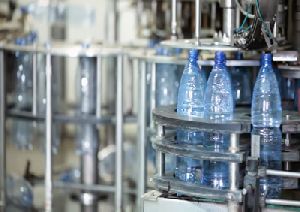
Bottling Plant
We are one of the well known entities engaged in manufacturing, exporting and supplying Bottling Plants. The offered plants are widely used for packaging bottles of various sizes. These plants are manufactured by utilizing high quality components and ultra-modern technology in the strict guideline of our highly qualified professionals in line with predefined industrial parameters. Apart from this, these Bottling Plants can be availed by our valued clients at marginal prices. Features: *Hassle free operation *Minimum maintenance *Low power consumption *Long durability We have achieved distinct market place by manufacturing and supplying a highly functional range of Mineral Water Bottling Plant. Our range is assembled using high grade components and cutting-edge technology, which make them largely acceptable in the industry.
...moreBe first to Rate
Rate ThisOpening Hours